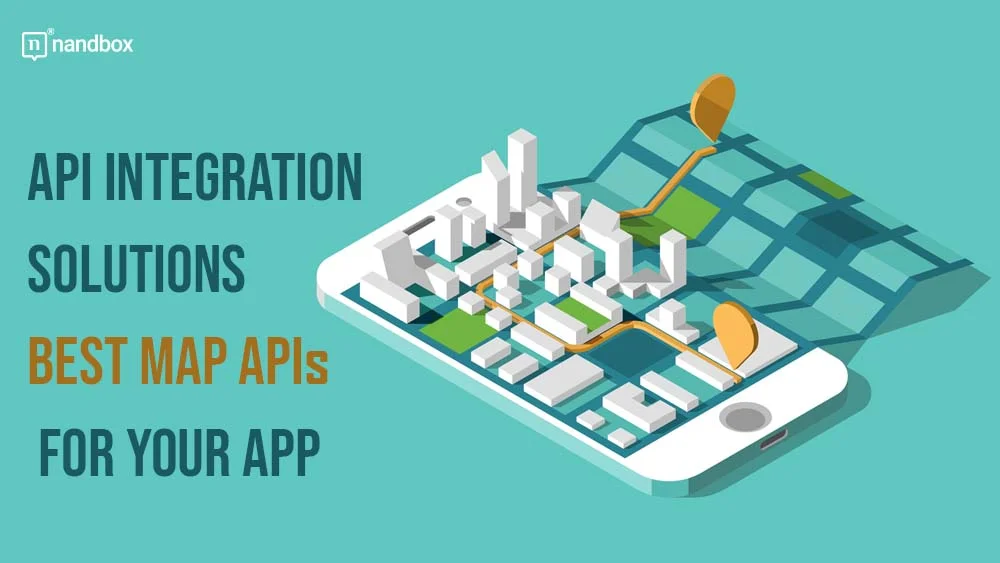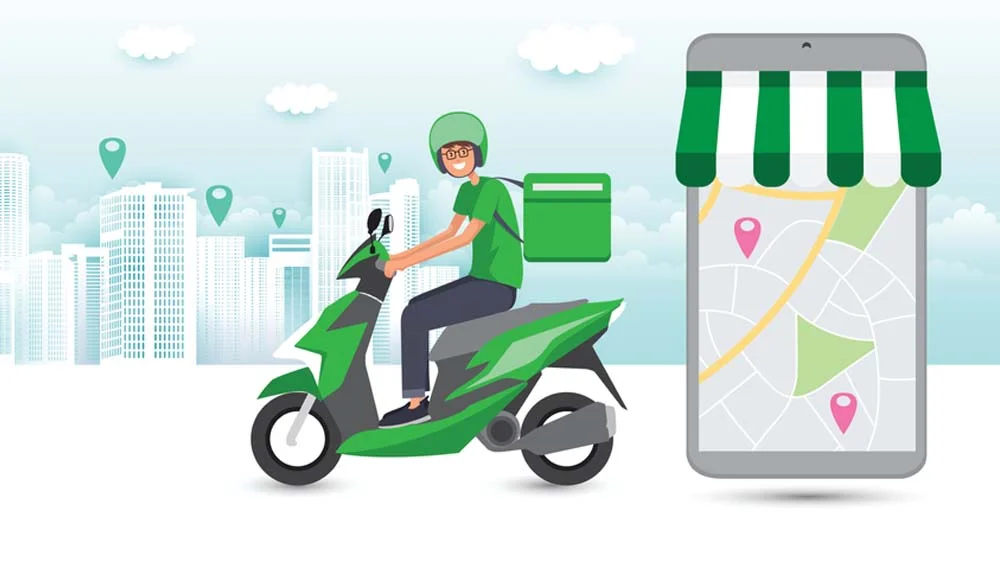Mobile applications in many fields now rely heavily on maps and other location-based services. Including map functionality and features in your app can significantly improve its user experience across a wide range of use cases, from navigation and transportation to social networking. Back in the day, including map services was very difficult and required much effort, money, and time. However, developers can now use the Map APIs (Application Programming Interfaces) made available by many popular mapping service platforms to get the job done. In this article, we’ll take a look at several of the top map API integration solutions and talk about why they’re useful.
What Are API integrations?
In order to understand the word API integration, we need to explain each syllable alone. First, let us explain what an API is. API, or application programming interface, is a set of functions and guidelines that help two applications and servers transfer data and information with each other. Or, in better words, it is the official communication language between devices, applications, and servers. At a specific meeting point, two servers would start exchanging all kinds of information. In order for two servers to interpret the needs of others, they use APIs to streamline the process. Such an outstanding process is significant, and we, as users, witness every second without even knowing.
App developers decide to take APIs to another level and expand what they can do, later coming up with API integrations. We can consider API integration as a sort of facilitator that allows app developers, organizations, and businesses to control and set the process of connectivity between two devices, apps, or servers.
API integrations are widely used across all organizations in all fields nowadays, as they help streamline and speed up all business operations.
Importance of API integrations
Enhancing Functionality and Features
API integrations allow developers to expand the capabilities of their applications by leveraging existing services and functionalities provided by other systems. By integrating with APIs, developers can incorporate features such as geolocation, payment gateways, social media sharing, and more, without having to build them from scratch. This saves time and resources while providing users with a more comprehensive and feature-rich experience.
Streamlining Workflows and Processes
APIs enable the automation and streamlining of workflows by integrating different systems and tools. For example, integrating a customer relationship management (CRM) system with an email marketing platform allows for seamless synchronization of customer data, resulting in more efficient lead management and personalized communication. API integrations eliminate the need for manual data entry and reduce the risk of errors, improving productivity and accuracy.
Enabling Data Exchange and Collaboration Between Different apps and servers
APIs facilitate the exchange of data between applications, allowing them to work together and share information in real time. This promotes collaboration and data consistency across different platforms. For instance, integrating an e-commerce platform with a shipping service API enables automatic order fulfillment and tracking updates. It ensures that the customer, as well as the merchant, have up-to-date information on the order status.
Boosting Innovation and Scalability
APIs enable developers to leverage the innovations and capabilities of external systems and services. By integrating with third-party APIs, developers can tap into new technologies, access vast data repositories, and leverage specialized functionalities. This encourages innovation and enables faster development cycles. Additionally, API integrations facilitate scalability by providing the flexibility to add or remove features and services as needed without significant changes to the core application.
Improving User Experience
API integrations can significantly enhance the user experience by providing seamless and personalized interactions. For example, integrating a social media login API eliminates the need for users to create new accounts, simplifies the onboarding process and reduces friction. Integrating with APIs that provide location-based services, such as maps or weather data, allows for personalized and context-aware experiences within applications.
What Is a Map API?
Among the gazillion API integration solutions found on the market, there is one very important one. Imagine being lost somewhere you don’t know—in a foreign country, for example. You don’t speak their native language, and what makes it even worse is that you can’t understand it, not even a single word. And now you are separated from your group, don’t know where you are, and can’t ask someone. You now have two options: cry or call someone for help. Also, there is a better option, open your mobile phone, go to maps, and determine exactly where you are. You can then ask the maps for your hotel’s directions. Simple yet effective.
This is one of the many cases in which maps can be a lifesaver, so it is no surprise that many apps of all types and fields now include maps. But how can developers include a map in their app? (Yes, this rhymed.) This is where one of the most commonly used API integration solutions, map APIs, comes into the picture.
Map API integration is the service or tool that allows developers to integrate fully functional and interactive maps into their apps (Yes, rhymed again.) This includes features like navigation, directions, geolocation, and many more.
What Apps Can Benefit From Map APIs
Now that we have established the idea that maps are very important for all individuals and that map APIs are essential for app developers. But what kinds of apps can benefit from the Map APIs and their features?
Ride-Hailing Apps
Of course, the most expected one. Map APIs are the core of any ride-hailing app. That would be due to the fact that no feature in the ride-hailing app can function properly without a map. For instance, you can’t request a ride without a map; you can’t track rides without maps; and so on. So, if you intend to develop a ride-hailing app, don’t forget to find a good map API to integrate.
Food Delivery Apps
A similar case to ride-hailing apps. Food delivery apps are also extremely dependent on map APIs and integration. Through maps in food delivery apps, people can find the nearest restaurants and see all the reviews. They can also order food online and track their orders.
Schools Apps
Lastly, there is a very important case where the map API is a true and major enhancer. Many local schools are now on the way or have already developed apps to offer their students a more personalized and safe learning journey. A few of these schools were also able to provide their students with a very advanced feature with map APIs, which is bus tracking. Imagine sitting at home and watching your kid safely arrive to and from school with no worries or concerns. Thus, map APIs are true enhancements when it comes to local school apps
API Integration Solutions: Best Map APIs
Whatever app you are developing—food delivery, ride-hailing, a school app, or literally any app—you think that a map API integration would be a great addition. Let us tell you about the best four map API integration solutions on the market.
Google Maps
First comes the renowned map and location service that is literally used by every individual around the world. Google Maps is the top and most powerful map API integration provider on the market. Google Maps uses and incorporates millions of pieces of data that are incredibly reliable and accurate, which makes it a go-to for many developers. The features included in Google Maps include tracking, routes, directions, traffic, and many more. Additionally, Google Maps is known for updating the data on a daily basis to improve its accuracy.
Mapbox
Mapbox is the second-most-used alternative to Google Maps. The API relies on powerful and accurate data that provides developers with advanced and functional map API integration. In addition to the data that Google may also present, what makes Mapbox special is the customization option. Developers can upload their own data to maps, customize maps to their liking, and include AR navigation.
Here Map API
Developers often opt for the HERE Maps API because of its reliability and extensive set of features. It supports several languages and has many useful features, such as geocoding, routing, and accurate traffic data. The developer-friendly interface and thorough documentation of the HERE Maps API make it simple to integrate mapping services into existing and new apps of all types. The robust functionality and consistent performance of the HERE Maps API make it a valuable tool for app developers.
Geoconcept
The Geoconcept API is a comprehensive mapping solution with built-in support for geocoding, routing, tracking, and route scheduling. It’s a flexible choice for developers with very specific mapping requirements, as it supports multiple data types and allows users to add their own data. The Geoconcept API is often a go-to option for developers wishing to integrate outstanding mapping capabilities into their apps and products due to its intuitive and easy design and dependable performance.






